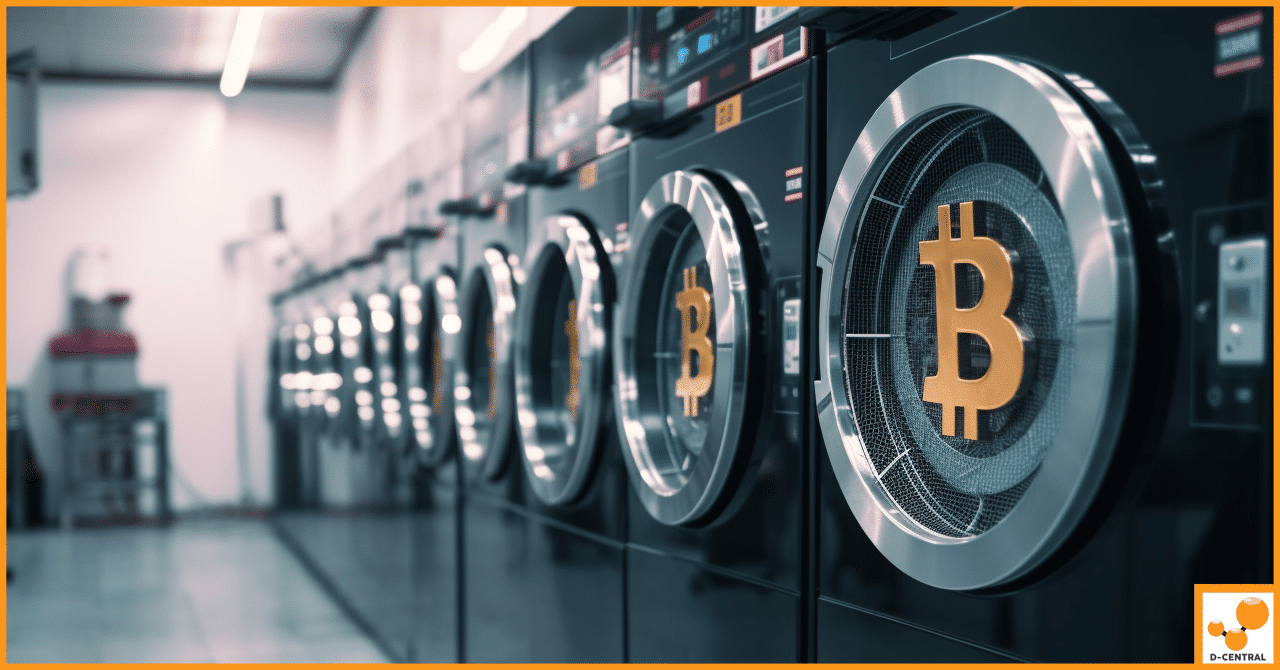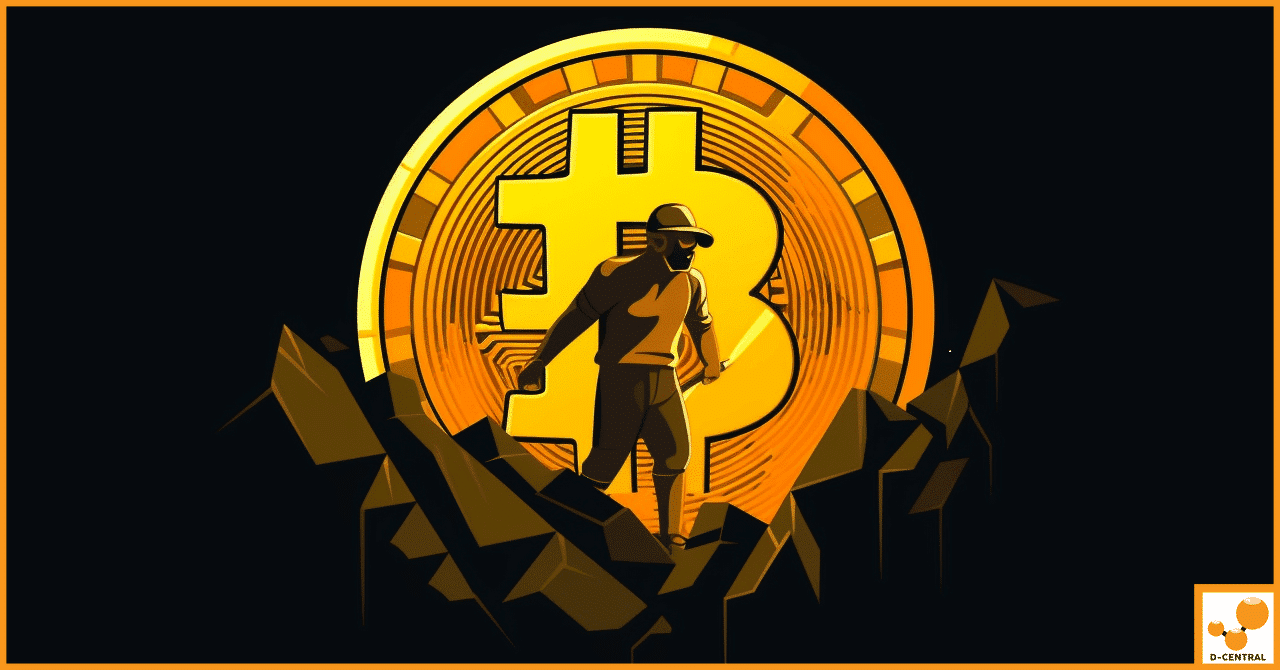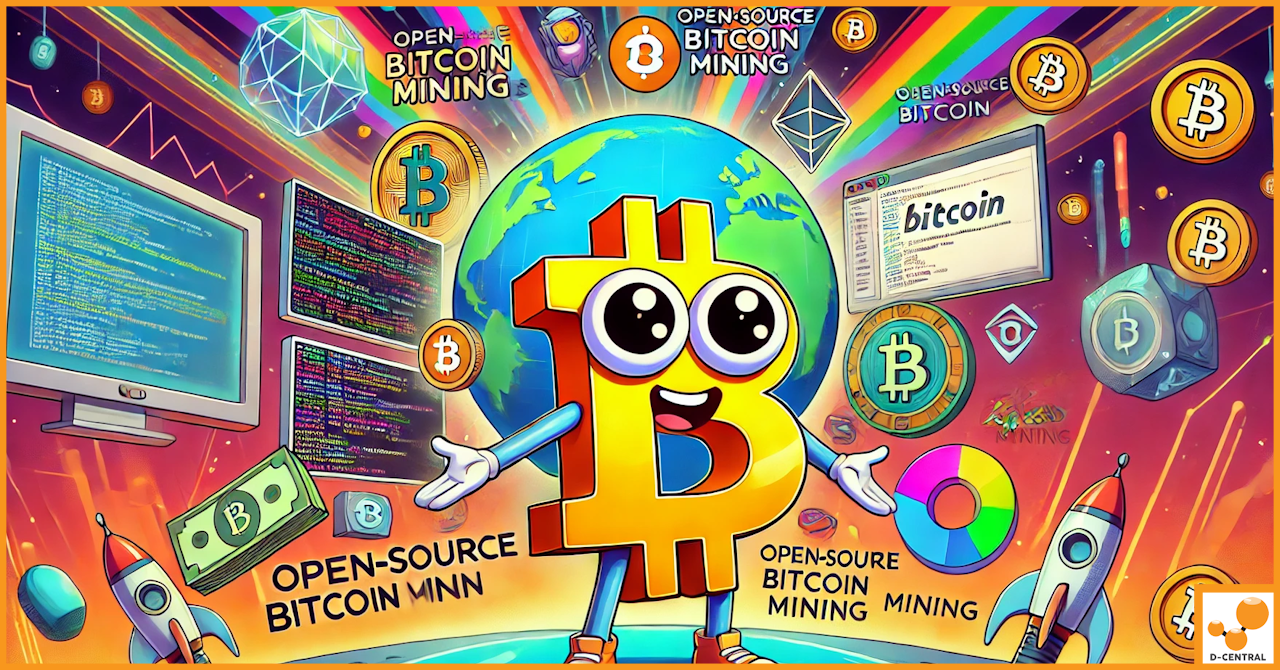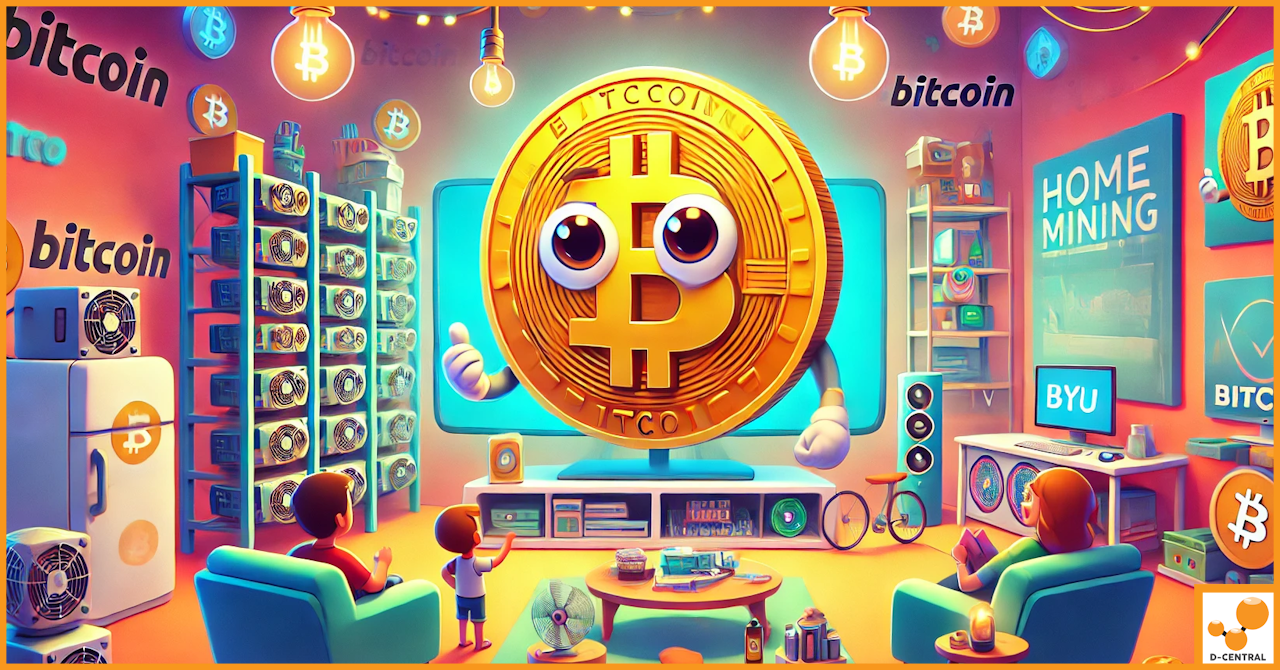
Harnessing Bitcoin Miners’ Heat to Boost Profits for Commercial Laundries
Welcome to a revolutionary intersection of two distinct yet surprisingly synergistic industries: Bitcoin Mining and Commercial Laundries. This exploration into
4479 Desserte Nord Autoroute 440, Laval, QC H7P 6E2

Welcome to a world where Bitcoin mining takes a new turn, where every enthusiast can become a part of the network in a more personal and rewarding way. This article delves into the exciting realm of running your own solo mining pool, a concept that empowers individuals to take control of their Bitcoin mining efforts.
Bitcoin mining is the backbone of the Bitcoin network. It’s the process by which new bitcoins are created and transactions are confirmed. Miners use powerful computers to solve complex mathematical problems, and the first one to solve the problem gets to add a new block to the Bitcoin blockchain, receiving a reward in bitcoins.
While many miners choose to join mining pools to increase their chances of earning rewards, there’s another approach that offers a unique set of benefits: solo mining. In solo mining, you’re working alone to find new blocks. This means that if you do find a block, you get to keep the entire block reward plus the transaction fees. It’s a high-risk, high-reward approach that can be particularly appealing to those who enjoy the thrill of competition.
One interesting concept in this context is “loto mining” (also referred to as “lottery mining” in the context of solo mining). This is a form of solo mining where you contribute a relatively small amount of hash power toward mining. It’s like buying a ticket to a lottery: your chances of winning are relatively small, but if you do win, the reward is substantial. In the case of loto mining, finding the right hash – the “winning combo” – means earning a whole block reward, currently 6.25 bitcoins (as of 2023).
In the following sections, we’ll explore the power and potential of running your own solo mining pool, delve into the specifics of the ckpool-solo software, and discuss how the Bitaxe open-source project is opening new frontiers in Bitcoin mining. To set up your own Bitcoin mining pool, you need a machine that can run 24/7. Whether you’re a seasoned miner or a curious newcomer, there’s something here for you.
Solo mining is a unique approach to Bitcoin mining that offers a range of benefits, particularly when you run your own solo mining pool.
Control and Customization
Running your own solo mining pool gives you complete control over your mining operation. You can customize the pool’s settings to suit your needs, including difficulty settings, block polling frequency, and more. This level of control allows you to optimize your mining operation based on your specific hardware, energy costs, and other factors.
Potential for Higher Rewards
In solo mining, if you’re the one to solve the complex mathematical problem and add a new block to the blockchain, you receive the entire block reward plus the transaction fees. As of 2021, the block reward is 6.25 bitcoins. This can be significantly more rewarding than pool mining, where the block reward is split among all participants.
Privacy and Security
Running your own solo mining pool can also provide increased privacy and security. You’re not sharing information with a third-party pool operator, and you can ensure that your mining operation is secure. This can be particularly important if you’re mining with significant resources.
However, it’s important to understand that solo mining also comes with its risks. The primary risk is that mining rewards are not guaranteed. Mining is a competitive process, and the chances of solving a block are proportional to your share of the total hash rate of the Bitcoin network. Solo mining requires significant computational power to successfully mine blocks due to high network difficulty. This means that you could potentially mine for a long time without earning any rewards. Profitability in solo mining is influenced by factors such as your hardware efficiency, energy costs, and the overall network difficulty, all of which can impact your mining outcomes. Additionally, the cost of mining—including the initial investment in equipment and ongoing expenses like electricity—plays a major role in determining whether solo mining is a viable option.
Supporting Bitcoin’s Decentralization
Beyond the potential for profit, running your own solo mining pool also aligns with the ethos of Bitcoin. Bitcoin is a decentralized currency, and mining is a crucial part of that decentralization. By running your own solo mining pool, you’re contributing to the decentralization of the Bitcoin network. You’re helping to maintain the network’s security and integrity, and you’re supporting the Bitcoin community. It is important to focus on decentralization and the long-term health of the network, rather than just short-term gains.
In conclusion, running your own solo mining pool can be a powerful way to mine Bitcoin. It offers control, potential for higher rewards, and the opportunity to support Bitcoin’s decentralization. However, it’s important to understand the risks involved and to approach solo mining with a clear understanding of the challenges as well as the potential rewards. Profits from solo mining can be highly variable and uncertain, depending on market volatility, halving events, energy costs, and the success rate of finding blocks.
ckpool-solo is a powerful piece of software designed specifically for solo Bitcoin mining. It’s an open-source project, meaning it’s freely available for anyone to use and modify. The software is robust, efficient, and highly customizable, making it an excellent choice for anyone interested in running their own solo mining pool. Running ckpool-solo allows you to operate your own mining pool, giving you greater control and flexibility over your mining operations.
Benefits of Using ckpool-solo
There are several key benefits to using ckpool-solo for your solo mining pool:
Setting Up and Customizing ckpool-solo
When preparing your hardware, pay attention to CPU performance and ensure adequate cooling for stable operation, especially if you are using devices like Raspberry Pi or other low-power systems. Sufficient disk space is also required for running a Bitcoin node. For example, a full node requires significant disk space, but you can run a pruned node to reduce disk space usage by keeping only the most recent blocks.
Setting up your own instance of ckpool-solo involves several steps:
When miners connect to your pool, each mining device is identified as a worker. The pool tracks each worker’s contributions, allowing you to monitor performance and manage your mining infrastructure effectively.
For clarity, here is an example configuration snippet for ckpool-solo:
{
"btcd": "127.0.0.1:8332",
"user": "rpcuser",
"password": "rpcpassword",
"difficulty": 1,
"prune": 5000,
"loglevel": "info"
}
By following these steps, you can set up your own instance of ckpool-solo and start mining Bitcoin on your own terms. Whether you’re a seasoned miner or a newcomer to the scene, ckpool-solo offers a powerful and flexible way to participate in the Bitcoin network.
When you decide to run your own solo mining pool, security becomes one of the most critical factors in ensuring a profitable and reliable operation. Unlike public pools, where a centralized team manages security, solo miners must take full responsibility for protecting their mining software, bitcoin core, and the valuable coins they may collect. Here’s how you can safeguard your mining pool and keep your bitcoin mining efforts secure:
Network SecurityStart by creating a robust network configuration. Use firewalls to restrict access to your mining servers, enable encryption for all communications, and always connect using secure protocols. This helps prevent unauthorized users from accessing your pool or interfering with the mining process.
Wallet SecurityYour block rewards and transaction fees are only as safe as your wallet. Opt for a hardware wallet or a highly reputable online wallet service with strong security features. Never store large amounts of coins on a device that is directly connected to the internet or your mining platform.
Mining Software SecurityChoose mining software that is well-maintained and widely trusted in the bitcoin mining community. Regularly update your mining software, bitcoin core, and all related dependencies to patch vulnerabilities and improve performance. When you git clone https repositories for mining tools, always verify the source and inspect the code for any suspicious changes.
Pool ConfigurationA secure conf file is essential for your solo mining pool. Configure authentication and authorization settings to ensure only trusted miners or workers can connect. Enable encryption for sensitive data and logs, and restrict access to configuration files to prevent tampering.
Regular Updates and MonitoringStay ahead of threats by keeping your system, mining software, and bitcoin core up to date. Use system monitoring tools to track performance, inspect logs for unusual activity, and set up alerts for any suspicious behavior. This proactive approach helps you quickly respond to potential security incidents.
Backup and RecoveryProtect your mining pool’s data and configuration by implementing a regular backup schedule. Store backups in secure, offsite locations, and test your recovery process to ensure you can restore your pool in case of hardware failure or a security breach. This is especially important for your wallet files and conf file.
Physical SecurityDon’t overlook the physical aspect of security. Whether you’re running your mining pool on a dedicated server, a raspberry pi, or a home setup, keep your hardware in a secure location. Use tamper-evident devices and limit physical access to trusted individuals.
Access ControlLimit pool access to authorized users only. Use strong authentication methods, such as SSH keys or two-factor authentication, and assign permissions carefully. Regularly review user accounts and remove any that are no longer needed.
By focusing on these security best practices, you can create a solo mining pool that is not only profitable but also resilient against threats. Security is an ongoing process—regularly research new developments, inspect your system for vulnerabilities, and stay connected with the bitcoin mining community for the latest advice. With the right approach, you’ll be well-equipped to operate a secure, efficient, and successful solo mining pool in the ever-evolving world of bitcoin mining.
As we look ahead, the future of solo mining is bright, filled with potential developments and innovations that could further empower individual miners and strengthen the decentralization of the Bitcoin network.
One of the most exciting prospects is the continued advancement of mining software like ckpool-solo. As these tools become more efficient and user-friendly, they will lower the barriers to entry for solo mining, making it an increasingly viable option for a wider range of individuals.
Furthermore, we can expect to see more integration between mining software and hardware. This could lead to more streamlined and efficient mining operations, further boosting the appeal of solo mining.
Role of D-Central Technologies
At D-Central Technologies, we’re committed to playing a leading role in shaping this future. As a Bitcoin mining service provider, we’re constantly exploring new ways to empower miners and contribute to the Bitcoin ecosystem.
We offer a range of services, from consulting and hardware sourcing to mining hosting and . Our offerings are designed to help miners secure consistent revenue streams and ensure reliable financial reporting. We’re also passionate about education, providing informative content to help our clients and the wider community understand and navigate the world of Bitcoin mining.
In the coming months, we’ll be focusing on promoting the use of ckpool-solo and exploring its integration with innovative open-source projects like Bitaxe. We believe that these efforts will help to further democratize Bitcoin mining and contribute to the resilience and decentralization of the Bitcoin network.
Your Role in the Future of Solo Mining
We encourage all Bitcoin enthusiasts to consider running their own solo mining pool. It’s a powerful way to contribute to the Bitcoin network and potentially earn Bitcoin rewards. With the right tools and guidance, anyone can become a solo miner.
Whether you’re a seasoned miner or a newcomer to the scene, your participation matters. By running your own solo mining pool, you’re not just mining Bitcoin – you’re helping to shape the future of Bitcoin mining. We invite you to join us on this exciting journey.
In the ever-evolving landscape of Bitcoin mining, one project that stands out is Bitaxe. Bitaxe is an open-source Bitcoin miner hardware project that uses BM1397 ASICs. For mining Bitcoin, ASIC hardware is often required to achieve competitive hashrate performance. It’s designed to be standalone, embedded, efficient, versatile, and fully open-source, making it an exciting frontier in the world of Bitcoin mining.
Complementing Solo Mining Efforts
Bitaxe can complement solo mining efforts in several ways. Its standalone and efficient design makes it an excellent choice for solo miners who want to maximize their mining efficiency. Furthermore, as an open-source project, Bitaxe aligns with the ethos of decentralization that is inherent in solo mining.
The versatility of Bitaxe also means that it can be customized to suit the needs of individual miners. This can be particularly beneficial for solo miners, who often need to optimize their mining operations based on their specific circumstances.
Future Integration with ckpool-solo
Looking ahead, we at D-Central Technologies see great potential in integrating ckpool-solo with Bitaxe. By running a local instance of ckpool-solo on Bitaxe, miners could potentially have an all-in-one solution for solo mining. Bitaxe could serve as a mining control center, consolidating management and monitoring features for solo miners and providing a centralized platform for overseeing their operations.
Imagine a Bitaxe, powered by a Bitcoin node, running its own local instance of ckpool-solo, mempool, and lightning node. This is the kind of innovative integration that we believe could revolutionize solo mining.
While this vision is still in the future, we’re committed to working towards it. Over the next 12 months, we’ll be exploring ways to make this integration a reality. We believe that this effort will open up new possibilities for solo miners and contribute to the continued growth and decentralization of the Bitcoin network.
As part of our commitment to empowering Bitcoin enthusiasts and contributing to the decentralization of the Bitcoin network, D-Central Technologies is proud to offer a public pool in the form of a solo mining pool. This public pool is open to all, providing accessible and transparent opportunities for anyone interested in solo mining.
Our public solo mining pool is powered by ckpool-solo, a robust and efficient mining software. It offers all the benefits of solo mining, including the potential for higher rewards and the opportunity to contribute directly to the Bitcoin network. Miners participating in our public pool benefit from regular and stable payments, ensuring consistent revenue and reliability.
Joining our public solo mining pool is straightforward. You’ll need to have your own mining hardware and a Bitcoin wallet to receive any rewards. To participate, first create an account on our pool’s website. Once you have these, you can connect your hardware to our pool by configuring your mining software with the pool’s domain and port, and then start mining. Make sure to check your connection logs to confirm you are successfully connecting to the pool.
When you join our pool, you’ll be part of a community of Bitcoin enthusiasts who are passionate about mining and decentralization. You’ll also have the opportunity to learn from others and share your own experiences.
It’s important to note that solo mining involves a degree of risk. The rewards can be substantial if you successfully mine a block, but there’s also a chance that you might mine for a long time without earning any rewards. We encourage all our pool members to be aware of these risks and to mine responsibly.
We invite all Bitcoin miners, whether you’re a seasoned pro or a curious newcomer, to add your hashrate to our pool. By doing so, you’ll be contributing to the decentralization of the Bitcoin network and potentially earning Bitcoin rewards. Keep in mind that building a mining rig can require an initial investment of several thousand dollars, so be prepared for the financial commitment involved.
Whether you’re interested in “loto mining” with a small amount of hash power, or you’re ready to commit significant resources to solo mining, your contribution is valuable. Join us in this exciting venture and become a part of the future of Bitcoin mining.
In this exploration of solo mining, we’ve delved into the power and potential of running your own solo mining pool. We’ve discussed the benefits and risks of solo mining, introduced the ckpool-solo software, and highlighted the exciting frontier of the Bitaxe open-source project. We’ve also shared our vision for the future of solo mining and invited you to join D-Central Technologies’ public solo mining pool.
Running your own solo mining pool offers a unique set of benefits, including full control over your mining operation, potential for higher rewards, and the opportunity to contribute to the decentralization of the Bitcoin network. While it comes with its risks, with the right tools and guidance, solo mining can be a rewarding venture.
The Bitaxe project and the potential integration of ckpool-solo represent exciting developments in the world of Bitcoin mining. These innovations could further empower individual miners and contribute to the resilience and decentralization of the Bitcoin network.
We encourage you to explore solo mining and consider running your own pool. Whether you’re a seasoned miner or a newcomer to the scene, your participation matters. By running your own solo mining pool, you’re not just mining Bitcoin – you’re helping to shape the future of Bitcoin mining.
Finally, we invite you to share this article with others who might be interested in solo mining. Join the D-Central Technologies community, add your hashrate to our public solo mining pool, and start your solo mining journey. Together, we can contribute to the growth and decentralization of the Bitcoin network.
Question: What is solo mining?
Answer: Solo mining is a unique approach to Bitcoin mining where you’re working alone to find new blocks. This means that if you do find a block, you get to keep the entire block reward plus the transaction fees. It’s a high-risk, high-reward approach that can be particularly appealing to those who enjoy the thrill of competition.
Question: What is loto mining?
Answer: Loto mining is a form of solo mining where you contribute a relatively small amount of hash power towards mining. It’s like buying a ticket to a lottery: your chances of winning are relatively small, but if you do win, the reward is substantial. In the case of loto mining, finding the right hash – the ‘winning combo’ – means earning a whole block reward.
Question: What is ckpool-solo?
Answer: ckpool-solo is a powerful piece of software designed specifically for solo Bitcoin mining. It’s an open-source project, meaning it’s freely available for anyone to use and modify. The software is robust, efficient, and highly customizable, making it an excellent choice for anyone interested in running their own solo mining pool.
Question: What is Bitaxe?
Answer: Bitaxe is an open-source Bitcoin miner hardware project that uses BM1397 ASICs. It’s designed to be standalone, embedded, efficient, versatile, and fully open-source, making it an exciting frontier in the world of Bitcoin mining.
Question: How can I join D-Central Technologies’ public solo mining pool?
Answer: Joining D-Central Technologies’ public solo mining pool is straightforward. You’ll need to have your own mining hardware and a Bitcoin wallet to receive any rewards. Once you have these, you can connect your hardware to our pool and start mining.
DISCLAIMER: D-Central Technologies and its associated content, including this blog, do not serve as financial advisors or official investment advisors. The insights and opinions shared here or by any guests featured in our content are provided purely for informational and educational purposes. Such communications should not be interpreted as financial, investment, legal, tax, or any form of specific advice. We are committed to advancing the knowledge and understanding of Bitcoin and its potential impact on society. However, we urge our community to proceed with caution and informed judgment in all related endeavors.
Related Posts

Welcome to a revolutionary intersection of two distinct yet surprisingly synergistic industries: Bitcoin Mining and Commercial Laundries. This exploration into

Discover the world of open-source Bitcoin mining with D-Central Technologies. Learn about innovative hardware, efficient software solutions, and how you

In the ever-evolving landscape of cryptocurrency, home miners play a pivotal role in maintaining Bitcoin’s core principles of decentralization and